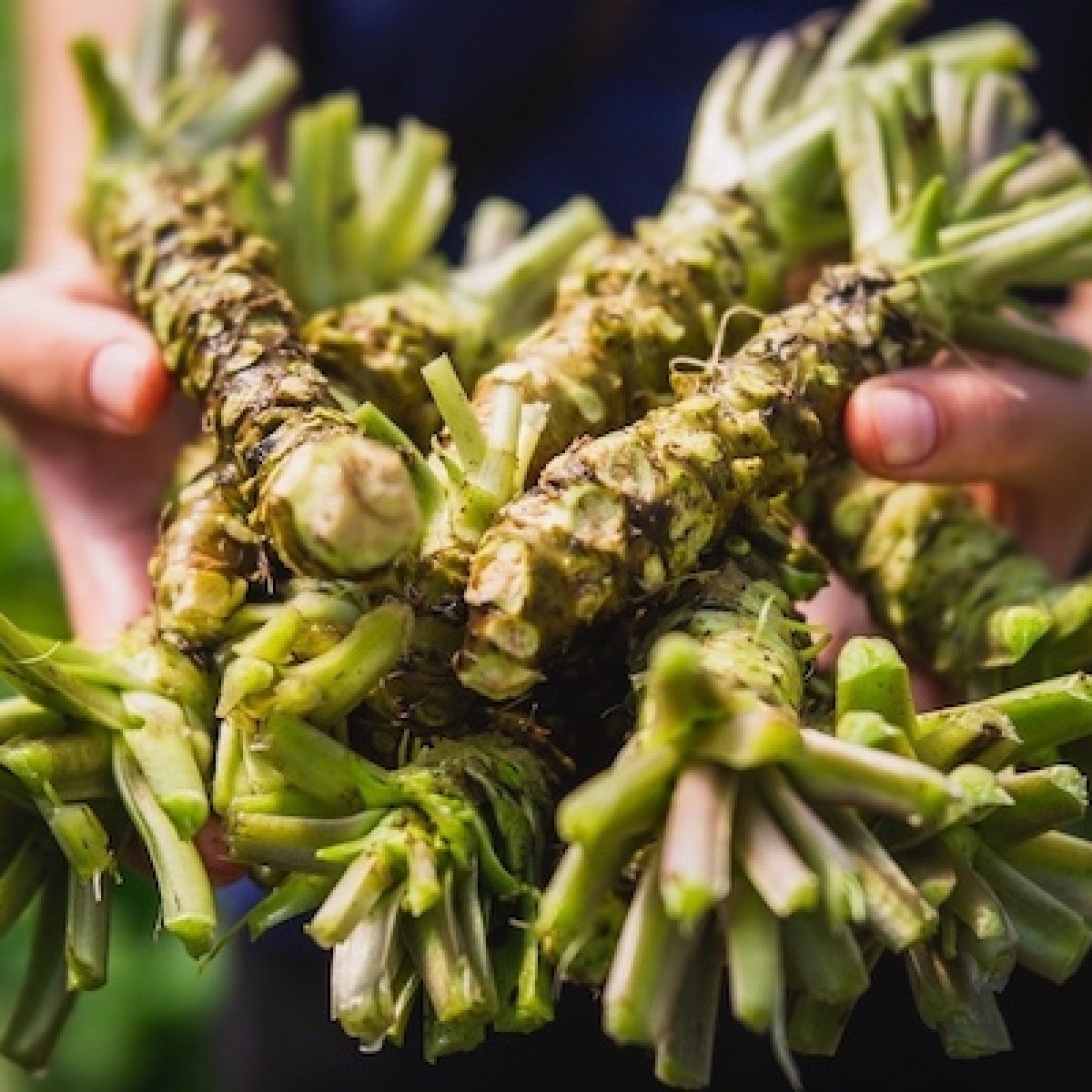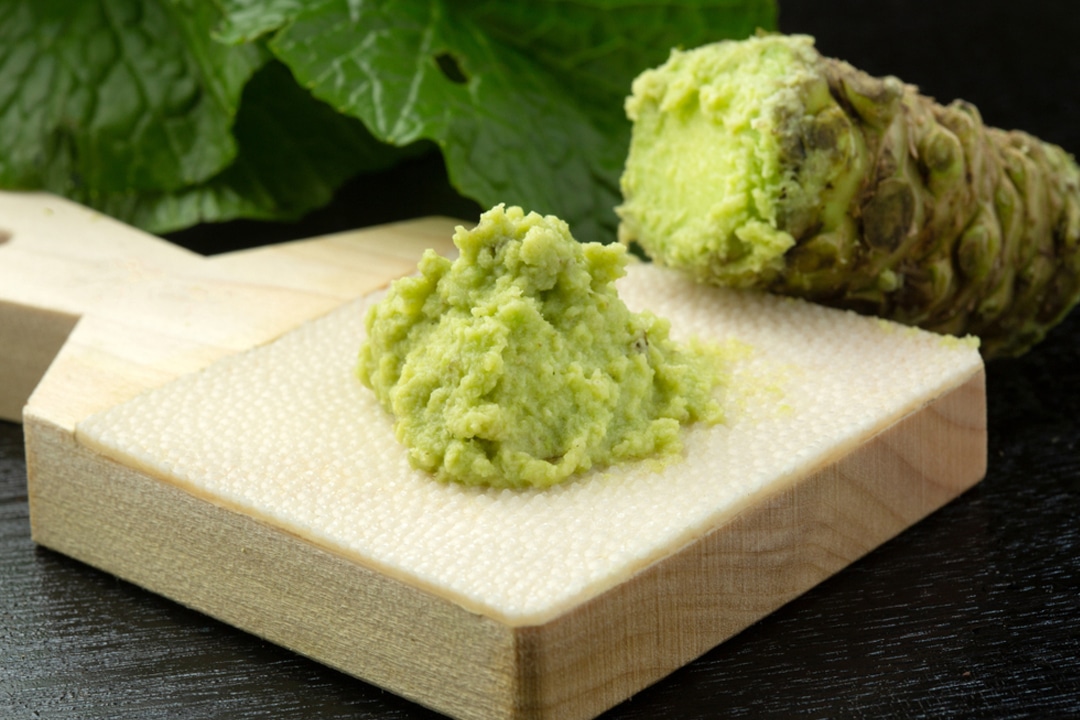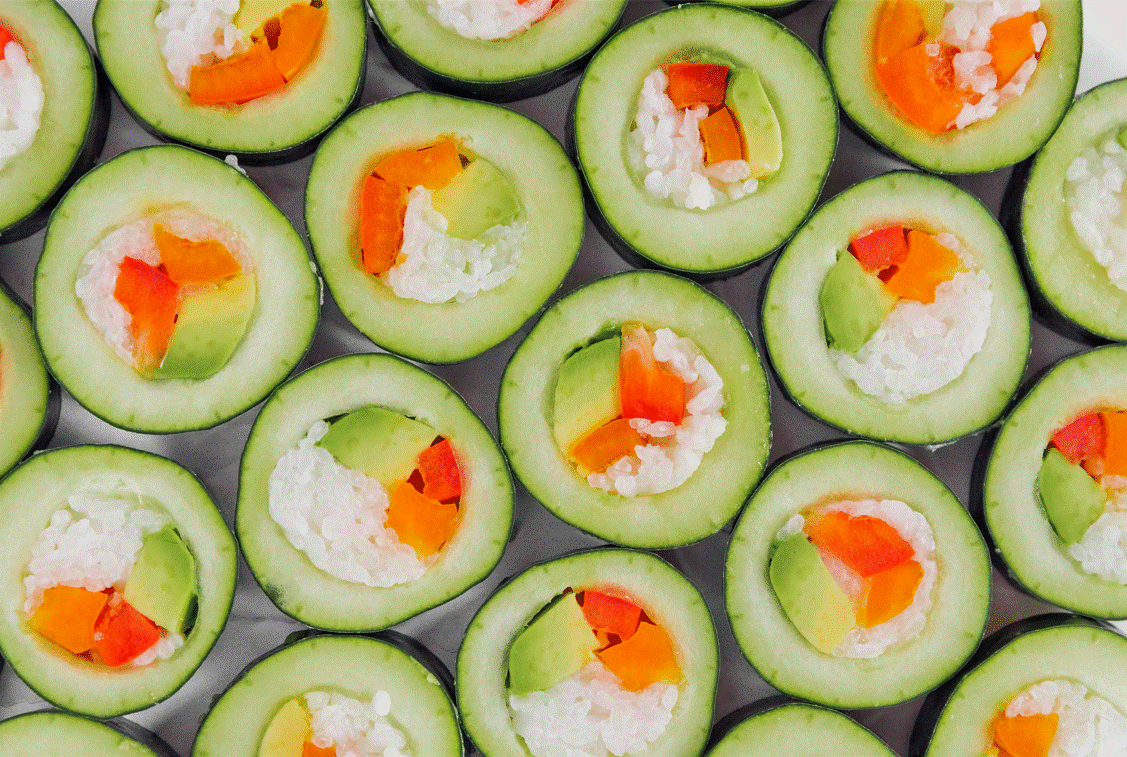When you think of wasabi, that fiery green paste served alongside sushi probably comes to mind. However, in most cases, what you’re getting isn’t genuine wasabi, but rather a blend of horseradish, mustard, and green food coloring. This imitation, while popular, lacks the subtle flavor and unique qualities of real wasabi (Wasabia japonica).
The authentic version, which grows naturally along Japanese mountain streams, offers a milder, aromatic heat with an herbal sweetness. However, the high cost and specific growing requirements of real wasabi mean that most restaurants use substitutes. But not all.
To kick off the fall, ice cream company Salt & Straw introduced an apple series that highlighted the autumn fruit in five flavors, including dairy-free Apple Wasabi Sorbet. This flavor might sound aggressive, but it’s not. Real wasabi has a delicate, almost floral flavor with a nuanced heat that steps aside, allowing the sweetness of the apple sorbet to shine through.
 Oregon Coast Wasabi
Oregon Coast Wasabi
While the flavor has disappeared into Salt & Straw’s archives, for those eager to taste the difference, here’s what sets real wasabi apart and how to use it in plant-based recipes.
Real wasabi versus green horseradish: what’s the difference?
Both wasabi and horseradish come from the Brassicaceae family, which includes mustard and cabbage. However, while they share some similarities, their flavors are distinct. Horseradish, widely cultivated in Europe and North America, produces a sharp, pungent heat that tends to linger.
In contrast, authentic wasabi from Japan has a more complex flavor profile, offering an initial rush of heat that quickly dissipates, leaving a subtly sweet aftertaste—perfect for applications such as Salt & Straw’s apple sorbet.
“It may be surprising to some people, but the pungency of real wasabi is less sharp compared to the imitation kind,” Iron Chef Masaharu Morimoto, owner of 20-year-old Wasabi restaurant in Mumbai, told Tasting Table. “Instead, it is more savory with a real depth of flavor.”
The rarity of authentic wasabi stems from its challenging cultivation. Genuine wasabi requires specific growing conditions—cool, running water and shaded environments—that are difficult to replicate outside of Japan. Even within Japan, genuine wasabi can be hard to come by and is considered a luxury ingredient.
Understandably, these limitations lead many restaurants to rely on horseradish-based wasabi substitutes, with Jennifer Bloeser—co-founder of Oregon Coast Wasabi, Salt & Straw’s supplier and the largest wasabi grower in the US—estimating that 99 percent of wasabi people consume is actually more horseradish than the real thing.
 Getty
Getty
While Oregon Coast Wasabi was a pioneering grower outside of Japan, other farms—such as Half Moon Bay Wasabi Company in California and The Wasabi Company in the United Kingdom—have since put down roots in wasabi farming to bring the real deal to more consumers.
When purchasing real wasabi, look for reputable sellers who specify their wasabi as “Wasabia japonica” and avoid products labeled generically as “wasabi” or containing colorants and additives.
Wasabi powder—which can be mixed with water to create a paste—is also a cost-effective solution to real wasabi. Here, make sure that the powder is free from fillers such as mustard, horseradish, and dyes in order to assure an authentic wasabi experience.
Shark-skin wasabi graters
Traditional Japanese cuisine has long utilized sharkskin (samegawa) graters to process fresh wasabi, as the fine texture of sharkskin is highly effective at breaking down wasabi’s dense fibers to release its full aroma and flavor. Sharkskin’s unique abrasiveness allows wasabi’s cell walls to break efficiently, which is crucial for achieving the desired level of pungency.
However, these graters are difficult to maintain, require specific techniques, and pose ethical concerns due to the declining population of Japanese angel sharks, which may soon be classified as a threatened species.
In response, companies such as Yamamoto Foods in Shizuoka, Japan have pioneered alternatives that replicate the benefits of sharkskin without its drawbacks. Its innovative stainless-steel grater, Hagane-Zame, was developed specifically for wasabi to replicate the fine grating and maximize flavor.
“The idea for this product came from customers’ comments stating home-grated wasabi was not very pungent because ordinary graters made of metal or plastic were not fine enough,” the company explains.
After experimenting with more than 200 prototypes, it found that etching the surface with the hiragana characters for “wasabi” created the ideal texture for producing a fine, aromatic paste.
Oregon Coast Wasabi also offers its own stainless steel grater, which the company throws in for free with the purchase of one pound ($130 worth) of wasabi root.
A number of porcelain graters—developed specifically for wasabi or more generally for other roots such as ginger—are also available.
Ways to use real wasabi: 5 plant-based recipes
The complex, delicate heat of real wasabi adds depth to various dishes, complementing rather than overpowering other flavors. Here are 5 plant-based recipes to showcase real wasabi’s unique flavor profile.
BECOME A VEGNEWS VIP: Get exclusive product deals, freebies, and perks galore!
1Grillable Katsu Burgers With Wasabi Mayo
The wasabi mayo in this Vegan Grillable Katsu Burger brings a sharp, peppery contrast to the creamy katsu sauce, elevating the crunchy, golden tofu.
Get the recipe
2Sushi Sandwich With Crispy Tofu and Pickled Beets
While this recipe does not call for wasabi, its addition would add a layer of zingy, aromatic heat that dances with the tart pickled beets.
Get the recipe
 Sarah Bond
Sarah Bond
3Healthy Vegan Cucumber Sushi Rolls With Spicy Mayo
These rolls are more veggie-centric than traditional sushi. Cucumber replaces nori and features a filling of carrots, bell peppers, avocado, tofu, and rice. Take this refreshing dish to a new level with a dollop of real wasabi.
Get the recipe
4Japanese-Inspired Rainbow Salad With Carrot-Ginger Dressing
This salad uses a punchy wasabi-edamame mix as a protein-packed alternative to croutons, delivering a zesty, peppery contrast to the fresh vegetables.
Get the recipe
5Herby Vegan Roasted Tomato Gazpacho
This recipe calls for either horseradish or wasabi paste for a subtle kick. Choose the latter to add a refreshing heat that balances the chilled soup’s earthy, savory depth, making it a vibrant take on classic gazpacho.
Get the recipe
For more plant-based stories like this, read:
JUMP TO ... Latest News | Recipes | Guides | Health | Subscribe













